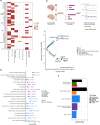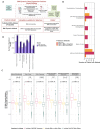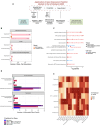This is a preprint.
BMI Interacts with the Genome to Regulate Gene Expression Globally, with Emphasis in the Brain and Gut
- PMID: 39649609
- PMCID: PMC11623720
- DOI: 10.1101/2024.11.26.24317923
BMI Interacts with the Genome to Regulate Gene Expression Globally, with Emphasis in the Brain and Gut
Abstract
Genome-wide association studies identify common genomic variants associated with disease across a population. Individual environmental effects are often not included, despite evidence that environment mediates genomic regulation of higher order biology. Body mass index (BMI) is associated with complex disorders across clinical specialties, yet has not been modeled as a genomic environment. Here, we tested for expression quantitative trait (eQTL) loci that contextually regulate gene expression across the BMI spectrum using an interaction approach. We parsed the impact of cell type, enhancer interactions, and created novel BMI-dynamic gene expression predictor models. We found that BMI main effects associated with endocrine gene expression, while interactive variant-by-BMI effects impacted gene expression in the brain and gut. Cortical BMI-dynamic loci were experimentally dysregulated by inflammatory cytokines in an in vitro system. Using BMI-dynamic models, we identify novel genes in nitric oxide signaling pathways in the nucleus accumbens significantly associated with depression and smoking. While neither genetics nor BMI are sufficient as standalone measures to capture the complexity of downstream cellular consequences, including environment powers disease gene discovery.
Figures






References
Publication types
Grants and funding
LinkOut - more resources
Full Text Sources
